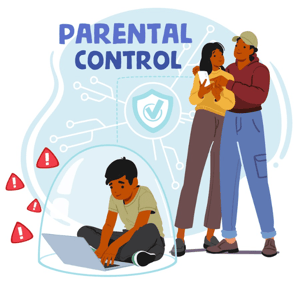As any parent knows, it can be challenging to know how to best support your child’s interests. When it comes to game design, you may be wondering if this is a worthwhile endeavor for your child to pursue. It is important to remember that game design is a lucrative profession, with game designers earning an average of $88,271 per year.
Pursuing game design can help your child develop essential skills such as creativity, problem-solving, and critical thinking. These skills will be beneficial regardless of what field they eventually choose to pursue. So even if your child’s interest in game design does not last, supporting them in this interest can help them develop important skills that will benefit them throughout their life.
Designing games is a great way to build cognitive abilities and imagination. Game design teaches valuable skills that can be used in various fields, but it also helps kids learn to think from someone else’s perspective. This intrinsic skill of value creation is essential for entrepreneurs and can be helpful in almost any profession.
If your kids are interested in game design, it’s essential to guide them in the right direction. Help them transition from passionate gamers to actual game designers by teaching them the basics of coding and game development. With your support, they’ll be able to turn their creativity and passion into successful careers.
Table of Contents
Why is coding necessary?

Programming and coding concepts are the foundation of game design. As such, kids must have a strong understanding of these topics before they begin designing games. There are many resources available to help kids learn about programming and coding.
It is also crucial for parents to be supportive and encourage their children to explore these topics. In addition, parents should also maintain an open dialogue with their children about game design so that they can provide feedback and guidance. With these supports in place, kids will be well on their way to becoming rockstar game designers.
In this article, I’ll provide you with five practical tips that will help you help your child understand what it takes to become a rockstar game designer:

Play Games and Evaluate Gameplay
As apps become more and more popular, young children need to understand how they work. Children can start to see patterns and figure out how particular elements and mechanics make a game fun by playing games. In addition, looking at a game from different angles will help them understand what makes a game exciting and addictive.
Furthermore, it’s helpful to expose children to good and bad games to learn what makes a particular game boring or repetitive. By playing games and analyzing them, children can gain a valuable understanding of game design.
Problem-solving skills are essential for game designers. They can develop the ability to create well-rounded and engaging designs. When they’re playing a game, encourage them to think about what could be done to improve it.
This will teach them how to identify and resolve issues and help them understand how to fix problem areas and foster problem-solving skills that will be invaluable in their future careers.
Create with Code
In today’s world, game designers need to have a deep understanding of computer programming to be successful. Designers are often expected to write scripts when laying out levels. When technical challenges arise, those with coding backgrounds can brainstorm solutions with the programming team. This provides immediate value.
Fortunately, there are some great ways for kids to learn to code while also improving their game design skills. One way is through online courses that use fun and interactive exercises to teach the basics of coding. These courses often incorporate game design elements, such as level design, so kids can learn while they play.
There are also software programs specifically designed for kids that make learning to code easy and fun. Many of these programs use drag-and-drop blocks of code, which kids can rearrange to create their working programs. By providing kids with these early opportunities to learn, we can set them up for success in the ever-changing world of technology.
One of our favorite introductory resources is the MIT Media Labs Scratch platform. Scratch allows kids to program simple 2D games using a visual block programming language. But the most remarkable thing about Scratch is that kids get to make design decisions about the games they create. They can determine how fast enemies travel, how many hit points the user’s player has, the velocity of a laser shot, the look and feel of a game, and more.
CodaKid is a great place to learn computer programming and game design. Our platform uses real languages and professional tools so that students can build their own Minecraft mods, Roblox games, 3D adventure games using the Unreal 4 Game Engine, game apps, and more. Online support from real programmers and designers is also beneficial. Overall, CodaKid is for anyone interested in learning more about computer programming and game design.
Once your child has developed the necessary skills, they can begin using Roblox, Unreal, or the Unity platforms independently. All are free and open-source and provide access to the same tools that professional designers at major studios use. For example, the best-selling game Fortnite was created with the Unreal 4 Game Engine.
Platforms like Roblox have created a marketplace where your child can publish and even try to earn money from selling her games. Some teens are making millions by building games for the Roblox platform.
Coding is an essential part of game design, especially for designers who want to take on more responsibility in creating their games. Teaching your kids how code works will give them the skills they need one day!
Design Games With the 4 Cs
The four key game design elements are challenge, choice, change, and chance. When designing a game, it is important to keep these elements in mind to create an enjoyable and engaging experience for players.
Challenge is essential in keeping players engaged, but it should be balanced not to frustrate or bore them. Choice provides players with a sense of control and allows them to personalize their experience. Change keeps things fresh and prevents monotony, while chance adds an element of unpredictability that can spice up gameplay.
By keeping these elements in mind, game designers can create engaging and entertaining experiences for players.
Game designers are always looking for ways to increase gameplay value, and one of the most common strategies they use is randomization. This presents the player with an unpredictable number of enemy attacks, randomly timed challenges, and other alterations that make the game more exciting. In multiplayer games, there is a natural element of chance that some players take risks, misjudge circumstances, make mistakes, and add an unpredictable element to the game. This makes multiplayer games even more exciting and fun to play.
Understanding the four Cs of game design can help your child build engaging games with solid replay value.

Teach Them to Become Storytellers
One essential element of game design is storytelling. A great story can transport players to another world and make them care about the game and its characters. A well-told story can also act as a driving force for gameplay, keeping players engaged and motivated to keep playing.
Designers must carefully consider crafting a compelling narrative that will captivate players. This means thinking about plots, character development, dialogue, and pacing. It’s also important to ensure that the story integrates seamlessly with the gameplay mechanics and other game elements.
While crafting an immersive and engaging story is no easy feat, it’s one of the things that separates great game designers from the rest. With a bit of creativity and careful planning, any designer has the potential to create a truly unforgettable gaming experience.
When young children are introduced to video games, they sometimes are eager to design their own. However, before they can start creating, it is important to teach them about game structure. They need to determine what kind of game they want to build, what choices the players have, how open or constrained those choices will be, and how they will influence the ongoing story and the final ending.
By understanding these basic principles, they will be able to create a more balanced and enjoyable game. There are many different exercises for teaching storytelling. You can enroll them in classes and encourage them to read or play string-a-long storytelling games. With a bit of guidance, your child will be well on their way to designing their own video game.
Practice, Practice, Practice
Designing games for young children can be both challenging and rewarding. On the one hand, you need to create something easy to understand and engage with. On the other hand, you want to avoid making something too simple or repetitive. The key is striking the right balance.
One of the best ways to achieve this balance is to playtest your game. Surrender the controls to others, and see how they react. Take note of what works and what doesn’t. Then make adjustments.
By taking this iterative approach, you can ensure that your game is fun and challenging for young players.
Conclusion
At CodaKid, we teach our students how to design and build games through a process of iteration. By breaking the design process down into small, manageable steps, students can see the impact of their decisions more clearly and make corrections along the way. We believe that the best way to learn game design is to build lots of games and get feedback from other people.
By practicing the art of iterative design, students can learn how to take an idea and turn it into a fully realized game. If your child is interested in learning more about game design, CodaKid is the perfect place to start. Talk to us today and see how much fun designing games can be!

















